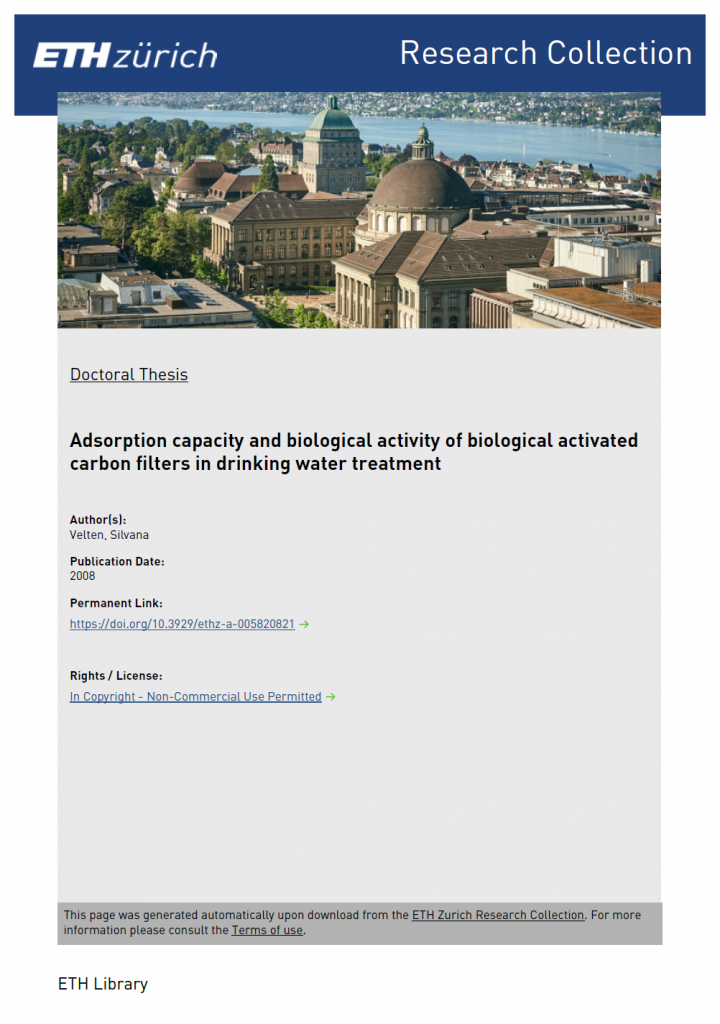Adsorption capacity and biological activity of biological activated carbon filters in drinking water treatment
Velten, S. (2008)

Published in: 2008
Pages: 163
Publisher:
ETH
Author:
Velten, S.
Uploaded by:
SuSanA Admin
Partner profile:
common upload
1188 Views
19 Downloads
Granular activated carbon (GAC) filters have been used for decades to remove various kinds of organic micropollutants (MP), disinfectant by-products and taste and odor (T&O) compounds from water by adsorption. In recent years chemical oxidation by ozonation was implemented in many treatment plants before GAC filtration. During ozonation a substantial fraction of the natural organic matter (NOM) present in surface waters is oxidized to smaller and biodegradable compounds thus giving rise to elevated assimilable organic carbon (AOC) concentrations. This fraction is readily metabolized by the biomass present in the GAC filter. To date, the removal processes occurring in GAC filters are not completely understood and therefore most GAC filters have been designed empirically. Improved drinking water quality requirements (regulations of European Union and U.S. Environmental Protection Agency) and the availability of innovative treatment technologies make it necessary to rethink the role of activated carbon applications in water works. This necessitates gaining a more detailed
understanding of simultaneously occurring processes in GAC filters, in particular with regard to adsorption and microbiological processes.
Bibliographic information
Velten, S. (2008). Adsorption capacity and biological activity of biological activated carbon filters in drinking water treatment. ETH
Filter tags
Case studies in other formats English Practitioners















